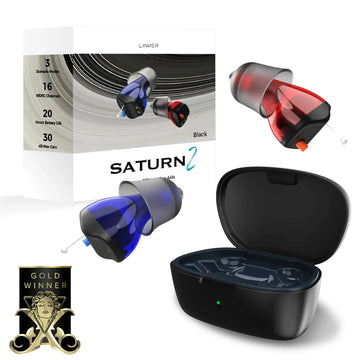Hearing loss affects millions of people globally and can significantly reduce quality of life. As the demand for advanced hearing solutions increases, so does the need for thorough clinical research to ensure that hearing aids are not only effective but also safe and compliant with regulatory standards. From early-stage feasibility to structured evaluations of clinical performance, the path to bringing hearing devices to market is both rigorous and essential.
Are Clinical Trials Necessary for Hearing Aids?
In many countries, hearing aids are classified as medical devices. This classification subjects them to a range of clinical evaluation requirements depending on their class, intended use, and risk level. While some over-the-counter solutions may be exempt from extensive testing, most innovative or programmable devices — especially those used in pediatric or medically complex populations — must undergo detailed assessments.
Clinical trials serve to:
- Establish the safety and efficacy of the device in real-world conditions
- Demonstrate compliance with evolving medical device regulations
- Provide robust evidence to support marketing claims
- Protect patients and users from unforeseen adverse outcomes
In the EU, for example, the Medical Device Regulation (MDR) has significantly increased requirements for clinical evidence, especially through CER (clinical evaluation report) processes and ongoing post-market follow-up.
How Does a Feasibility Study Help in Hearing Device Development?
Before large-scale testing begins, developers often conduct a feasibility study for a medical device to assess whether a trial can be carried out efficiently and ethically. This is particularly useful in the field of hearing aids, where variability in user demographics, anatomical fit, and usage patterns can make standardized testing complex.
A feasibility study may focus on:
- The usability of the device by elderly or hearing-impaired users
- Patient willingness to participate in testing or return for follow-ups
- Site readiness and staff experience in audiology trials
- The reliability of self-reported outcomes or remote data capture
Feasibility studies provide the foundation for larger clinical investigations by confirming that methods, timelines, and recruitment strategies are realistic. In many cases, these early-phase studies also help refine the design and functionality of the hearing device itself, incorporating feedback from real users.
Components Often Included in Feasibility Studies for Hearing Aids:
- Pilot usability testing in clinic and at home
- Recruitment simulation from audiology centers
- Short-term safety data collection
- Device fit and comfort evaluation over time
By resolving potential barriers early on, manufacturers reduce the chance of delays or redesigns later in the development process.
Key Clinical Trial Elements for Hearing Aids
Clinical evaluations for hearing aids typically involve both objective measures (such as audiometry or speech recognition testing) and subjective feedback from participants. Regulatory authorities emphasize that studies should be well-controlled, reproducible, and reflective of intended use scenarios.
Some common components include:
- Audiological testing: Changes in hearing thresholds, speech-in-noise perception
- User feedback: Questionnaires on comfort, sound quality, ease of use
- Safety monitoring: Skin irritation, malfunction, or acoustic trauma
- Device data: Logging of usage hours, settings, and environmental noise exposure
These trials not only support regulatory approval but also guide manufacturers in refining firmware, mobile apps, and battery life optimization.
Why Regulatory Evaluation Is Getting Stricter
Due to increasing scrutiny on medical technologies, particularly in Europe, regulators demand stronger evidence than ever before. The creation of a robust CER for a medical device is no longer a paper exercise but a deeply analytical process that relies heavily on clinical data. Additionally, the shift from legacy directives to MDR means that even long-established devices may need re-evaluation under new rules.
This has led hearing aid developers to adopt more rigorous strategies:
- Building data pipelines for post-market surveillance from the start
- Collaborating with hospitals and audiology networks for better data
- Using adaptive trial designs to speed up development without compromising safety
- Incorporating patient-centered outcomes into trial design
Future Perspectives: Digital Integration and User-Led Evidence
The future of hearing aid clinical trials lies at the intersection of digital technology and personalized care. Newer devices are often Bluetooth-enabled, connected to mobile apps, and capable of cloud data transfer — which opens doors to decentralized trials and real-time usage analytics.
This transition brings several benefits:
- Faster feedback loops: Real-time data allows developers to improve devices continuously
- Wider participation: Remote monitoring enables inclusion of rural or mobility-limited patients
- Cost efficiency: Reduced need for in-person visits lowers trial costs and improves adherence
Moreover, patient-reported outcomes (PROs) will play a larger role. Understanding how hearing aids impact social interaction, confidence, or cognitive load is just as important as understanding decibel gain.
Aligning Innovation with Compliance
The development of hearing aids is no longer just a matter of technological advancement — it’s a careful balance between innovation, usability, and stringent regulation. Companies that succeed in this field are those that embed evidence generation into every phase of product development. Whether it begins with a robust feasibility study for a medical device or culminates in a detailed CER medical device report, the clinical evaluation process is central to device acceptance and success.
As user expectations grow and regulatory demands become more detailed, manufacturers must ensure their hearing solutions are safe, user-friendly, and backed by solid clinical data. With the right strategy and a patient-centered approach, hearing aid developers can meet both compliance requirements and the real needs of those affected by hearing loss.



![Linner Mercury Clarity OTC Hearing Aids [FSA & HSA Eligible] Linner](http://www.linnerlife.com/cdn/shop/files/Linner-Mercury-Clarity-OTC-Hearing-Aids-_FSA-_-HSA-Eligible_-Linner-110038953.webp?v=1725853434&width=360)

